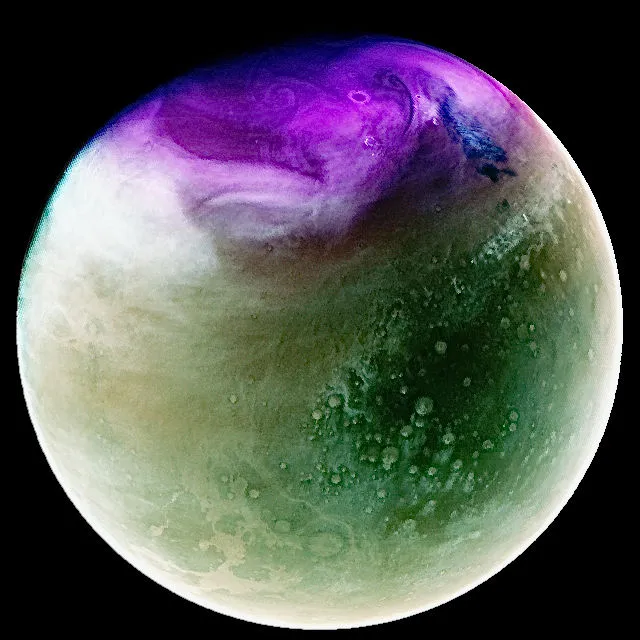Mars used to be a lot more like Earth than it is today: it was once much warmer and wetter.
Billions of years ago, Mars had liquid water on its surface, but Mars's water has been lost to space along with the planet's atmosphere.
More from the MAVEN mission

So where did its atmosphere go?
A NASA spacecraft has collected data that has enabled scientists to see this process in action.
Sputtering
The name scientists give to the process stripping away Mars's atmosphere is 'sputtering', which has been long theorised but never properly observed before.
NASA’s MAVEN (Mars Atmosphere Volatile Evolution) mission has seen this 'atmospheric escape process' directly for the first time.
It could help answer longstanding questions about how Mars has lost its water.

Mars's slow atmospheric loss
Early in its history, Mars lost its global magnetic field, which is the invisible shield that protects planets' atmospheres from being stripped away by the powerful solar wind.
The solar wind is a stream of charged particles that emanates from the Sun, and affects all bodies of the Solar System.
It's what causes aurorae on planets like Earth, Mars and Jupiter, for example.
As Mars's atmosphere thinned, it was no longer able to retain its water.
Scientists long suspected that sputtering played a key role in this process, but they'd never directly seen it in action. Until now.

How sputtering works
'Sputtering' sounds like the tiny, repetitive spitting of an old car enginer, but in planetary science it's much more dramatic.
"It’s like doing a cannonball in a pool," says Shannon Curry, principal investigator of MAVEN at the University of Colorado Boulder.
"The cannonball, in this case, is the heavy ions crashing into the atmosphere really fast and splashing neutral atoms and molecules out."

Seeing is believing
Before MAVEN's direct observation of sputtering, scientists had been working with indirect evidence: unusual patterns in Martian argon isotopes.
Lighter isotopes of argon were missing, and sputtering was the only suspect that made sense.
"It’s like we found the ashes from a campfire," Curry says. "But we wanted to see the actual fire."
MAVEN used its trio of science instruments (the Solar Wind Ion Analyzer, Magnetometer and Neutral Gas and Ion Mass Spectrometer), to build a 3D 'sputter map' of Mars’s atmosphere.
The team also needed measurements across the dayside and the nightside of Mars at low altitudes, which took years to gather.
MAVEN's resulting map shows bursts of argon gas in exactly the places where solar particles smacked into the atmosphere.
It has seen sputtering in action.
But not just that, sputtering is happening four times faster than predicted. And during solar storms the rate gets even faster.
Life on Mars
Water is key to life as we know it, so learning more about the history of water on Mars – and how the Red Planet lost its wetness – can tell scientists more about the potential for life on Mars.
It turns out sputtering has been a major force shaping the Red Planet's climate history and potential habitability.
"These results establish sputtering’s role in the loss of Mars’s atmosphere and in determining the history of water on Mars," Curry says.
The findings, published in Science Advances, are a leap forward in understanding what made ancient Mars wetter, and possibly more welcoming to life.
They also serve as a reminder of how nothing in space lasts forever, that planet's atmospheres are fragile and at the mercy of the harsh environs of the cosmos.
